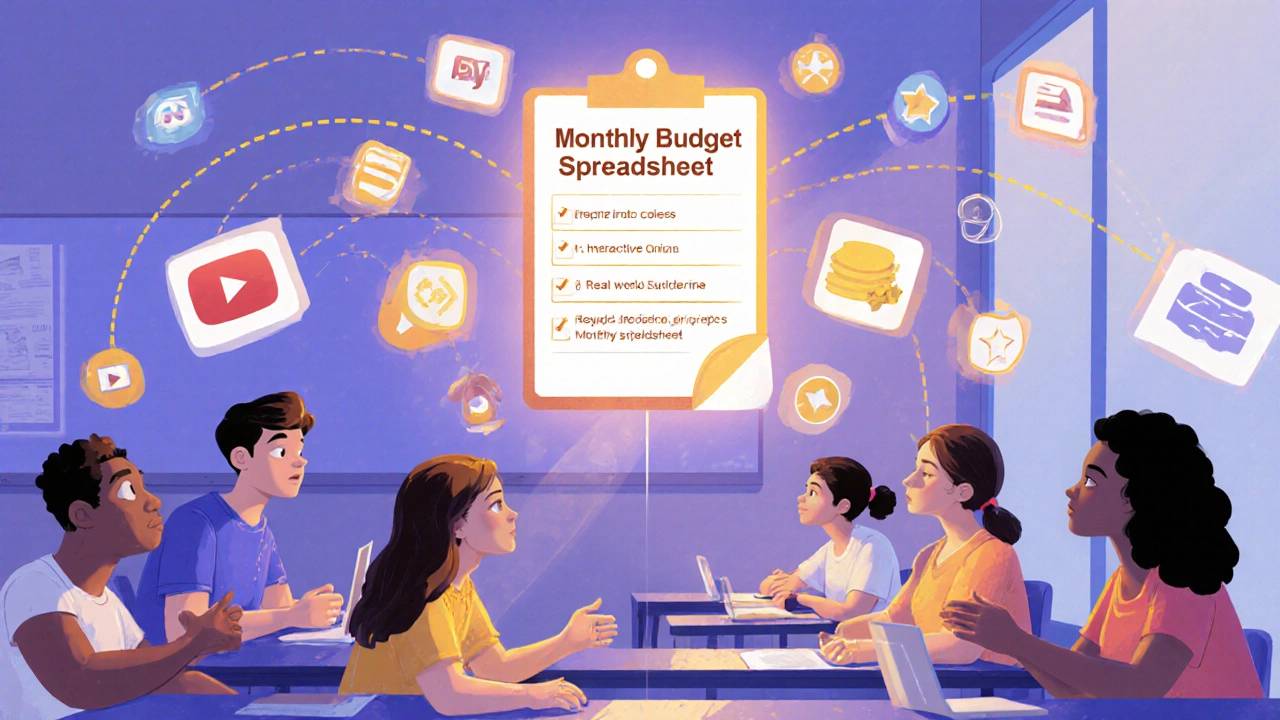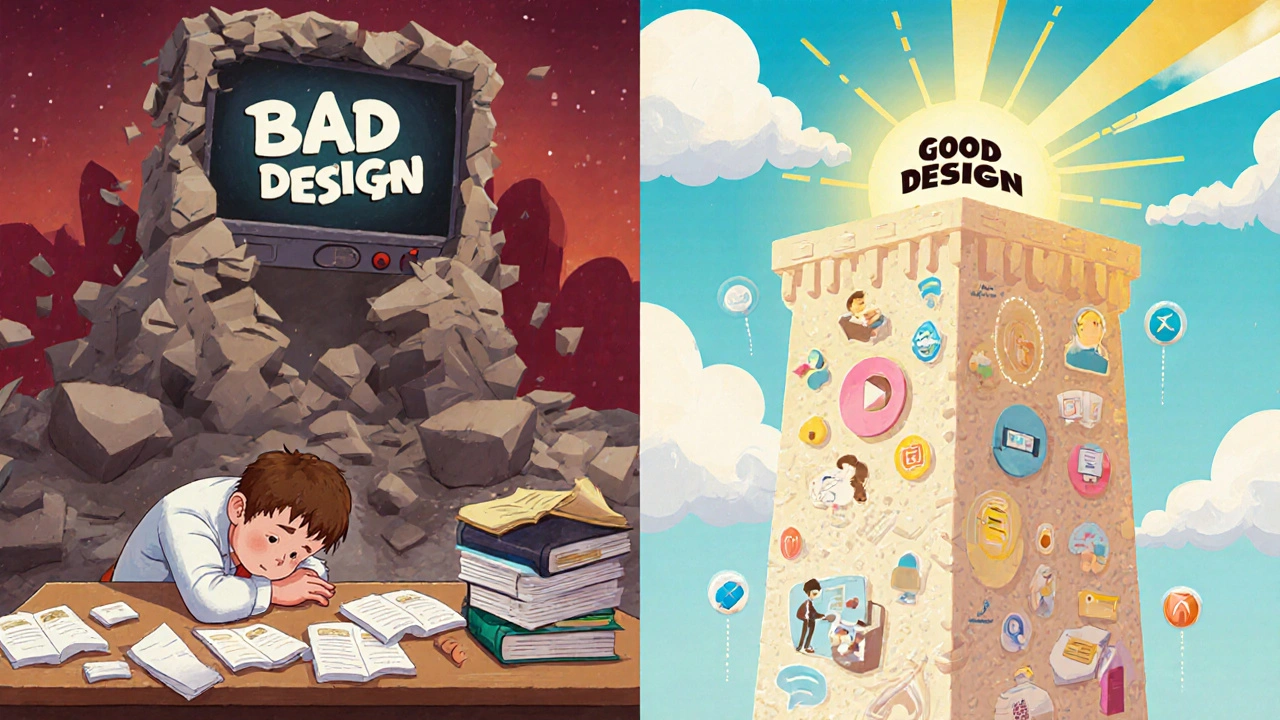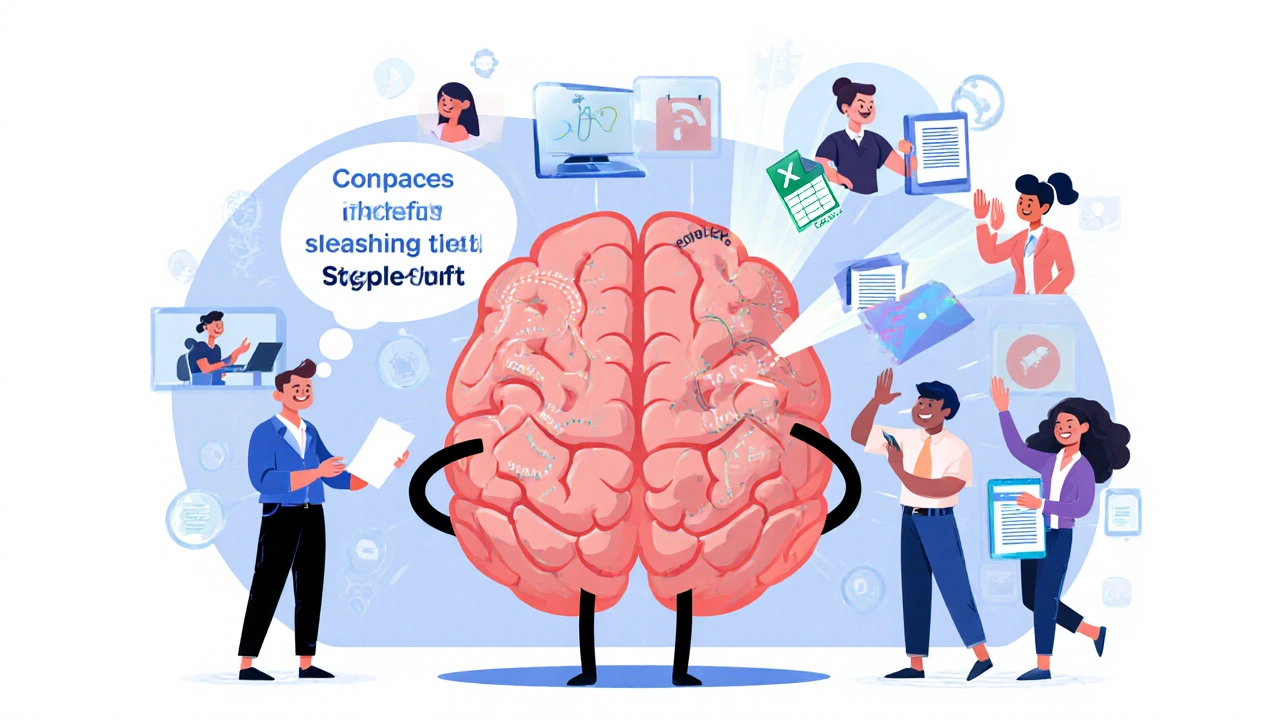Complete Guide to Instructional Design for Online Learning
 Oct, 16 2025
Oct, 16 2025
Most online courses fail-not because the content is bad, but because they were never designed to be learned.
Think about it: you’ve taken an online course that felt like reading a textbook with videos mixed in. No flow. No engagement. No real reason to finish. That’s not bad luck. That’s bad instructional design.
Instructional design isn’t just putting slides together. It’s the science of making sure people actually learn-and remember-what you’re teaching. And in 2025, with learners juggling jobs, kids, and distractions, getting it right isn’t optional. It’s the difference between a course that gets completed and one that gets abandoned by day three.
What Is Instructional Design?
Instructional design is the systematic process of creating learning experiences that make knowledge easy to understand, retain, and apply. Also known as instructional systems design, it’s built on decades of research from cognitive psychology, educational theory, and human behavior.
It’s not about making things pretty. It’s not about adding animations or quizzes just because you can. It’s about asking: How do people actually learn? And then building your course around that.
Good instructional design follows a clear structure. The most widely used model is ADDIE: Analyze, Design, Develop, Implement, Evaluate. It’s not a linear checklist-it’s a cycle. You keep going back to earlier steps as you learn what works and what doesn’t.
Why Most Online Courses Don’t Work
Let’s be honest: a lot of online courses look professional but feel empty. Why?
- They assume learners will stay focused for 45-minute videos.
- They dump information without connecting it to real-life use.
- They skip practice-no chance to try, fail, and try again.
- They don’t check if learners actually understood anything.
A 2024 study by the Online Learning Consortium found that 78% of learners quit courses because they didn’t see the point. Not because it was hard. Not because it was boring. Because they couldn’t answer: Why should I care?
That’s the core problem. Instructional design fixes that by starting with the learner’s goal-not the topic.
Start With Learning Outcomes, Not Topics
Most course creators begin with: “I want to teach Excel.”
Good instructional designers begin with: “What should the learner be able to do after this course?”
Here’s the difference:
- Bad outcome: “Understand Excel formulas.”
- Good outcome: “Create a monthly budget spreadsheet using SUM, IF, and VLOOKUP functions to track expenses and savings.”
One talks about knowledge. The other talks about action. And action is what sticks.
Use the Bloom’s Taxonomy verb list to write clear outcomes:
- Remember: List, name, recall
- Understand: Explain, summarize, describe
- Apply: Use, solve, demonstrate
- Analyze: Compare, categorize, differentiate
- Evaluate: Judge, critique, defend
- Create: Design, build, develop
Never use vague words like “know,” “understand,” or “learn.” They can’t be measured. And if you can’t measure it, you can’t improve it.
Chunking: Break It Down or Lose Them
Your brain can’t hold more than 4-7 pieces of new information at once. That’s called cognitive load.
So if you have a 60-minute lecture on project management, you’re overwhelming learners. Instead, break it into 10-15 minute chunks.
Each chunk should have:
- A clear goal (what they’ll learn)
- A short video or reading (5-7 minutes max)
- A quick check-in question or mini-exercise
- A real-world example
Think of it like building a house. You don’t pour the entire foundation, walls, and roof in one day. You build one section at a time. Same with learning.
Research from the University of Michigan shows learners retain 80% more when content is delivered in 12-minute bursts with active practice, compared to 45-minute lectures.

Make It Active, Not Passive
Watching a video is not learning. Doing something with what you watched is.
Passive learning-listening, reading, watching-leads to 10% retention after 72 hours. Active learning-doing, teaching, applying-leads to 75% retention.
So what does active look like in an online course?
- Drag-and-drop exercises to sort steps in the right order
- Simulations where learners make decisions and see consequences
- Peer feedback loops: “Post your draft and comment on two others”
- Real-world projects: “Design a customer service script for a real scenario”
- Reflection prompts: “What’s one thing you’ll change tomorrow?”
Don’t just ask “Did you get it?” Ask “Can you show me?”
Feedback Is Not Optional
Feedback isn’t just grading a quiz. It’s helping learners understand why they got something wrong-and how to fix it.
Good feedback is:
- Specific: “You used the wrong formula because you didn’t lock the cell reference.”
- Timely: Given within 24 hours of submission.
- Actionable: “Try this instead: use $A$1 instead of A1.”
- Encouraging: “You’re close-this part is solid, now let’s fix the logic.”
Automated feedback works for simple quizzes. But for complex tasks, human feedback-even if it’s just one comment per learner-makes a huge difference.
Platforms like Canvas and Moodle let you set up automated feedback rules. For example: “If learner scores below 70% on quiz 3, send them to the practice module.”
Design for Accessibility and Inclusion
Instructional design isn’t just about what’s taught-it’s about who can learn it.
One in five adults has a learning difference, vision issue, or hearing challenge. If your course doesn’t work for them, it’s not just unfair-it’s illegal in many places under accessibility laws like WCAG 2.1.
Here’s what to do:
- Use alt text for every image.
- Add captions to all videos-even if they’re just auto-generated at first.
- Use high-contrast colors (black text on white, not light gray on beige).
- Write in plain language. Avoid jargon. Explain acronyms.
- Offer multiple ways to learn: video, text, audio, interactive.
It’s not extra work. It’s better design. And it helps everyone.

Use the Right Tools-But Don’t Let Them Drive You
You don’t need fancy software to design great courses. But the right tools make it easier.
Here’s what works in 2025:
| Tool Type | Examples | Best For |
|---|---|---|
| Authoring Tools | Articulate 360, Adobe Captivate | Creating interactive lessons with quizzes and simulations |
| LMS Platforms | Canvas, Moodle, LearnDash | Hosting courses, tracking progress, managing learners |
| Visual Design | Canva, Figma | Designing clear graphics, infographics, and slide decks |
| Collaboration | Miro, Notion | Mapping out course flow and sharing feedback with teams |
| Assessment | Quizizz, Kahoot!, Google Forms | Quick checks, polls, and formative assessments |
Don’t choose a tool because it’s trendy. Choose it because it helps you meet your learning goals.
Evaluate and Improve-Constantly
The best instructional designers don’t launch and forget. They measure.
Ask these questions after each course run:
- What percentage completed the course?
- Where did learners drop off? (Check your LMS analytics)
- What did learners say in feedback? Look for patterns.
- Did they apply the skill in real life? (Ask managers, peers, or follow up in 30 days)
Use that data to tweak the next version. Maybe the quiz was too hard. Maybe the video was too long. Maybe the example didn’t resonate.
Improvement isn’t a phase. It’s the job.
Common Mistakes to Avoid
Here’s what trips up even experienced designers:
- Creating content for yourself, not the learner. (You know the topic. They don’t.)
- Using too much text on slides. If you’re reading it, they’re not learning.
- Ignoring motivation. Why should they care? Tie everything to their goals.
- Skipping the onboarding. Don’t assume learners know how to use the platform.
- Not testing with real users. Build a prototype. Give it to five people. Watch what they do.
The biggest mistake? Thinking instructional design is about technology. It’s about people.
What’s the difference between instructional design and curriculum design?
Curriculum design focuses on what should be taught across a program or degree-like a roadmap for an entire degree in business. Instructional design focuses on how to teach one course or module effectively. Curriculum is the big picture. Instructional design is the detailed plan for each lesson.
Do I need a degree in instructional design to do this?
No. Many great instructional designers come from teaching, corporate training, or even content creation. What matters is understanding how people learn. You can learn the basics through free resources like the Association for Talent Development (ATD) or Coursera’s Instructional Design courses. Certifications like the Certified Professional in Learning and Performance (CPLP) help, but experience and results matter more.
How long does it take to design an online course?
A common rule of thumb is 40-80 hours per hour of instruction. So a 2-hour course might take 80-160 hours to design well. That includes research, writing, building, testing, and revising. If you’re rushing it in 10 hours, you’re building a PowerPoint, not a course.
Can I use AI to help with instructional design?
Yes-but only as a helper. AI can draft quiz questions, suggest learning outcomes, or rewrite confusing text. But it can’t understand your learners’ needs, emotions, or real-world context. Use AI to save time on drafts, not to replace your judgment. Always review and adapt AI output with real learner data.
What’s the most important skill for an instructional designer?
Empathy. You need to step into the learner’s shoes: What do they already know? What’s stopping them from learning? What’s their biggest fear? What do they need to succeed? The best instructional designers aren’t tech wizards-they’re listeners who turn confusion into clarity.
Next Steps: Start Small, Think Big
Don’t try to redesign your entire training program tomorrow. Pick one module. One lesson. One video. Apply just one principle: make it active. Add one practice question. One real-world example. One feedback loop.
Then measure. Did more people finish? Did they say they understood it better? Did they use it at work?
That’s how you build expertise-not by reading books, but by doing, failing, and trying again.
Instructional design isn’t magic. It’s method. And it works.
Rohit Sen
October 29, 2025 AT 23:27Wow, another ‘instructional design gospel’-like we need another TED talk on chunking. Real learners don’t care about ADDIE. They care if it’s useful. Most of this is just fluff dressed up as science.
Vimal Kumar
October 31, 2025 AT 01:07I’ve seen so many courses fail because they skip the ‘why should I care?’ part. This post nails it. I’ve started using Bloom’s verbs in my team’s training docs and the feedback’s been way better. Simple shift, huge difference.
Amit Umarani
November 1, 2025 AT 17:41‘Chunking’? That’s not a word. It’s ‘segmentation.’ And you say ‘12-minute bursts’-but the study from Michigan? That was 2018. There’s newer data. Also, ‘VLOOKUP’ shouldn’t be capitalized. Fix your grammar before preaching.
Noel Dhiraj
November 2, 2025 AT 23:09Just started applying one active practice per module. One. That’s it. My completion rate jumped from 22% to 68% in two weeks. No fancy tools. Just asking people to do something. Seriously, start small. You don’t need a PhD to make learning stick.
vidhi patel
November 4, 2025 AT 00:40It is imperative that you correct the grammatical infelicities in your exposition. The phrase ‘bad instructional design’ is not a predicate nominative and must be restructured. Furthermore, the use of ‘you’ve taken’ is colloquially inappropriate in formal pedagogical discourse. I have attached a 12-page annotated revision.
Priti Yadav
November 4, 2025 AT 06:03They don’t want you to know this, but all this ‘instructional design’ stuff? It’s a corporate scam. Big EdTech wants you to believe you need to ‘chunk’ and ‘Bloom’ and ‘ADDIE’ so they can sell you $50k LMS licenses. The truth? Just give people a PDF and a Slack channel. That’s all they need.
Ajit Kumar
November 4, 2025 AT 23:59Let me be perfectly clear: the notion that ‘instructional design is about people’ is not merely correct-it is the foundational axiom upon which all pedagogical efficacy rests. The author’s assertion that ‘passive learning leads to 10% retention’ is corroborated by Mayer’s Cognitive Theory of Multimedia Learning (2005), which, incidentally, is cited in Chapter 3 of Gagné’s Principles of Instructional Design (7th ed.), and yet, curiously, the original source is omitted here. This is not merely an oversight-it is an epistemological failure. Moreover, the use of ‘you’ as a second-person address in academic-adjacent discourse is grammatically indefensible and semantically destabilizing. The passive voice, though often maligned, serves a critical function in distancing the writer from subjective bias. In summary: your intentions are noble, but your execution is linguistically negligent.
Diwakar Pandey
November 6, 2025 AT 01:26I like how you emphasized feedback. I used to think automated quizzes were enough. Then I started leaving one personal comment on each submission-even just ‘This part was strong, try clarifying the second step.’ People responded. Not with grades, but with gratitude. Sometimes that’s all it takes.
Geet Ramchandani
November 7, 2025 AT 10:53Of course you think chunking works. You’ve never had to design a course for people who don’t speak English as a first language, who have 3 kids, and work two jobs. You think 12-minute videos are ‘manageable’? Try 12 minutes of silence while your toddler screams in the background. This whole post is a luxury fantasy written by people who’ve never had to learn under real conditions.
Pooja Kalra
November 7, 2025 AT 13:41Instructional design, like all human endeavors, is merely a mirror of our collective anxiety about meaning. We seek to ‘optimize learning’ because we fear the void-that knowledge, in its raw form, is inherently unstable, and our need to structure it is a desperate attempt to impose order on chaos. The verb ‘apply’ in Bloom’s taxonomy? A linguistic illusion. True understanding is ineffable. You cannot measure it. You cannot design for it. You can only witness it, silently, as it occurs.
Sumit SM
November 9, 2025 AT 02:21Okay, so here’s the thing: I love this post. Seriously. But I’m gonna say it again because it’s important-instructional design isn’t about slides or quizzes-it’s about connection. And if you’re not asking yourself, ‘What’s keeping my learner up at night?’ then you’re just making PowerPoint karaoke. Also, I’ve been using Canva for everything now. Free. Easy. Looks pro. And no, I’m not sponsored. Just saying.
Jen Deschambeault
November 9, 2025 AT 16:14My team tried this last quarter. We cut our 90-minute webinar into three 15-minute chunks with a quick reflection prompt after each. Completion jumped from 31% to 74%. We didn’t change the content. Just the rhythm. Proof that small changes matter.
Kayla Ellsworth
November 10, 2025 AT 03:50So let me get this straight. You’re telling me the solution to online course failure is… more structure? More rules? More checklists? Wow. What a revolutionary idea. Next you’ll tell us water is wet and gravity exists.
Soham Dhruv
November 12, 2025 AT 01:17Just wanted to say this helped me fix my training docs. I used to write like a textbook. Now I just ask: ‘What would my cousin do with this?’ That’s my test now. Simple. Works. Thanks for the reminder.
Bob Buthune
November 12, 2025 AT 10:37I’ve been doing this for 20 years and let me tell you-no one cares about your ADDIE cycle. The real problem? Corporate culture. They want it done yesterday. They don’t want feedback loops. They don’t want accessibility. They just want a shiny button that says ‘Complete Course.’ And you? You’re just another dreamer in a sea of indifference. I’ve seen it. I’ve cried about it. I’ve lost sleep over it. And you? You’re still writing blog posts. I’m sorry.
Jane San Miguel
November 13, 2025 AT 22:14It’s amusing how this post romanticizes ‘empathy’ as if it’s a novel concept. The real innovation is not in Bloom’s taxonomy-it’s in the cognitive load theory applied through adaptive learning algorithms, which this author conspicuously omits. The entire piece reads like a 2012 blog post dressed in 2025 jargon. Where are the data points from the Learning Analytics field? The AI-driven personalization models? You’ve written a manifesto, not a guide.
Kasey Drymalla
November 15, 2025 AT 10:01They’re lying to you. This whole thing is a scam. They want you to think you need to design courses. Just give them the video. That’s it. No quizzes. No feedback. No chunking. Just play it. People will watch. Or they won’t. End of story.
Rohit Sen
November 16, 2025 AT 05:46So now we’re supposed to believe AI can’t understand context? Funny. I used ChatGPT to rewrite 50 quiz questions based on learner errors. Cut my dev time in half. And guess what? The pass rate went up. Maybe empathy is just a fancy word for ‘lazy humans refusing to automate.’